Healthcare after COVID-19: Smart design solutions for clinical spaces
This pandemic is unlike anything we’ve seen before and has forced architects and designers to take a more critical eye to our projects in every industry, especially healthcare. The sad realization is, history repeats itself, but this is our chance to evaluate and make changes today that will have a significant impact in the future.
So how can we help?
According to U.S. Army researchers, harsh cleaners must be used every two hours to keep hospital surfaces free of bacteria such as MRSA and VRE. For many facilities, this frequency of environmental services is just improbable. Therefore, the critical decisions that go into interior solutions for hospitals must offer opportunities to minimize the effects of contagions. When selecting materials and fixtures, healthcare interior designers have the responsibility to uphold the most stringent infection control standards.
Here are a few smart and healthy interior design solutions for clinical spaces:
- Paint Shield/Registered Anti-Microbial Paint kills 99.9 percent of Staph, MRSA, E. coli, VRE, and Enterobacter aerogenes within two hours of exposure on painted surfaces and continues fighting for up to four years post application.
- Copper fixtures and copper-infused mesh or upholstery on furniture mitigates bacterial and viral transmissions, while copper-filled composite hard surfaces and linens have proven to reduce the number of hospital acquired infections.
- Silver Ion Technology is integrated into many coatings, polymers, and textiles at the molecular level of the product and not susceptible to wash-offs. This antimicrobial technology can be specified for common hospital fixtures including light switches, door handles, water tanks, bed rails, storage containers, bedding, gowns, cubicle curtains and carpet.
- Lighting Fixtures with Disinfection Technology should be used in high-acuity spaces. Fixture current’s disinfection capabilities are safe for human use and kill up to 99.7 percent of common surface pathogens over an eight-hour period.
- The Three I’s: Integral, Impervious, Impermeable. Seal nooks and crannies to eliminate hard-to-reach contaminants in patient areas and specify integral sinks and wall bases. Mitigate the opportunities for surface-borne pathogens with impervious hard counter surfaces. And improve cleanability with impermeable upholstery on patient and family seating.
As we enter the post-COVID-19 world, it is clear that we must harmonize design with infection control standards. These are a few easy-to-implement strategies that can be used in a wide array of solutions without ever compromising patient safety or design.
Work After COVID-19: Regaining Control
Like many right now, I am following my city’s orders to stay at home, and I’ve miraculously found no shortage of mini-projects to keep busy. Repaint the bathroom? Check. New plants and rugs in the living room? On it. Reorganize the linen closet? Done… twice.
Maybe this is the natural impulse of a designer stuck in one place, or just a reach for easy distractions. But when I think about the strange circumstances we are all facing, I realize there’s a greater issue at play: control.
When we feel powerless against something greater than us, a little control over one’s immediate environment can bring peace of mind. Even if it’s just adding a new succulent to the kitchen windowsill.
As a workplace designer – and an office worker myself – I wonder what employees will expect and demand of their workspace once this crisis subsides. It’s no longer a question of whether, but how, offices must evolve as a result. Open planning is under scrutiny, and infection control is a newly urgent issue no longer limited to healthcare facilities. And as we’ve seen in the past, major crises can create new norms out of old.
Designers can start asking some important questions now. What can our profession do to give workers a greater sense of control in their workspace after we emerge from this turbulent time?
The last ten years have made a promising start. A more mobile workforce and greater flexibility in work schedules has changed office design from the inside out. We should continue to explore how we can push and develop current strategies to support the concept of personal agency – and by extension, peace of mind – at work.
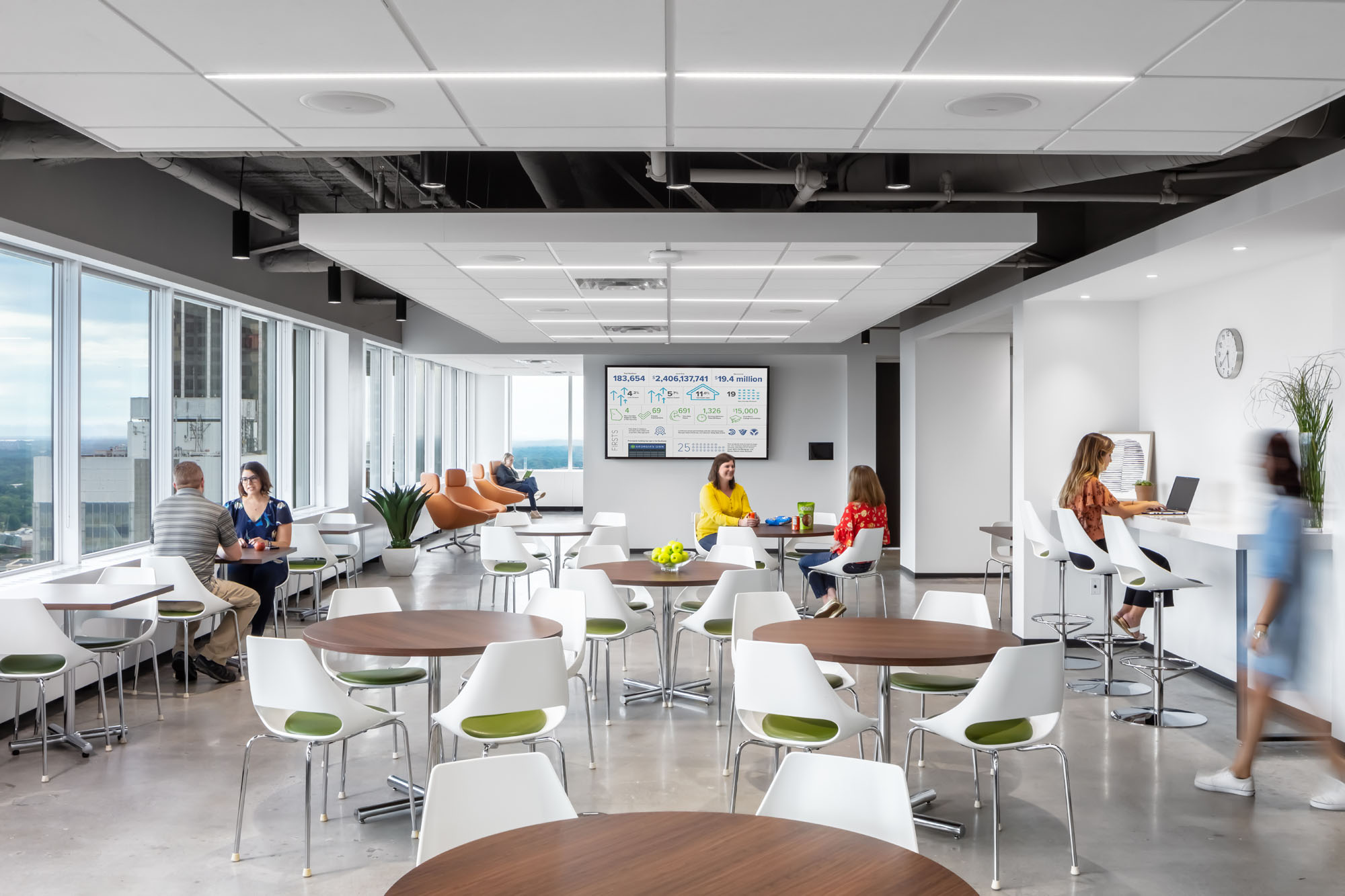
Some of these include:
WELL Strategies and Comfort
Broader adoption of WELL design strategies is making the office a greener, healthier place to be all day. With its focus on individual thermal and lighting controls as well as overall air quality, WELL criteria can also give workers a greater sense of comfort and confidence within their personal space.
Activity-Based Work Settings
Floor plans with unassigned seating and/or a variety of space choices offer employees the flexibility to move around as needs change throughout the day. They are also naturally supportive of employees who split their work time between the office and home, which we may see in greater numbers post-COVID crisis.
Hygiene Control
Especially in free address environments where desks are shared, hygiene will receive sharper focus. Hygiene has always factored into office design, but we can start thinking now about how to expand, improve, and include all employees in cleaning strategies, such as setting up a frequency protocol for cleaning shared spaces with high turnover throughout the day.
Focus on Mental Health
Well-being has become equally as important as physical wellness in office design. In a post-crisis era, designers can explore further measures that will support positive mental states and a feeling of control, from increasing the amount of simple micro-changes employees can make within their space, to including yoga/meditation rooms and other relaxing amenities.
We know infection control in the workplace will be getting more attention in the coming months. But let’s also remember how important a sense of personal agency is to feeling healthy, safe, and content at work. Pursuing design that speaks to both physical and mental health will help us overcome the present challenges we face and be better prepared for the next emergency in the future.
La La Land Retail
On a recent business trip I had the fortunate (and rare) encounter to have a few brief minutes to walk around between meetings. My first opportunity took me between Robertson Boulevard. I have to admit it’s been a while since I have made it to this area of LA…and at first I was disheartened…Robertson Boulevard, my how you have changed! While my beloved Chanel store still stands with its beautiful open air courtyard, it is flanked by endless “available” storefronts. The good news is that a short walk down Melrose, produced pockets of wonderful new retail and restaurants. And in true West Hollywood style, they vary from the refined design district with beautiful modern California architecture and storefronts, to the lush Marc Jacobs and Bookmarc’s buildings at Melrose Avenue, to the individual gritty and artful boutiques which remind us of the individual spirit and art that is inherently LA. And thankfully after cruising up Roberston Boulevard, I now instantly felt “in LA”. I had lunch in this area at a great little restaurant called Au Fudge – where fresh food meets creativity and if you are up for it, craft. The style is old meets new, white space met with brilliant accents that brought a refined touch to this little artsy niche, area of LA.
The following day took me along Abbot Kinney and Venice Boulevard….again, the richness of individuality, the crafted nature of the storefronts, interiors and boutiques, juxtaposed with a few refined restaurants reinforced the creative and laid-back side that LA has to offer. It’s refreshing to see both start-up boutiques as well as more established brands embrace a more laissez-faire attitude. When one thinks of LA, the formality and luxury definitely come to mind, but these artful pockets remind one instantly of the free spirit and creative entrepreneurship that exists here as well…how refreshing!
Tampa Premium Outlets
Big Data Creates Big Magic
I’ve grown up going to Walt Disney World in Orlando, Florida every few years for almost my entire life. So, I’ve seen a lot of the changes and improvements they’ve made over the years. I remember when they moved from printed tickets to ticket cards and then the introduction of the FastPass system in 1999 – but my all-time favorite technology has been the MagicBand and MyMagic+ system they launched in 2013.
I remember the absolute uproar over these when they were first launched. Everyone was so concerned that Big Mouse (- vs. Big Brother) was watching their every move and many couldn’t get around that discomfort. Cut to 2017 when my husband and I took our trip to Walt Disney World in September, practically every single person in the park was wearing one. Given the ubiquity of trackers like FitBit, Garmin, and the Apple Watch, this new openness to the MagicBands makes sense.
In fact, they’re so popular now that you can actually buy bands with custom designs on them rather than just using the free ones provided to guests staying in a Disney-owned resort.

If you’re not familiar with what the MagicBands are, they act as your keys to the kingdom – literally. Guests can use them as their room key, credit card, park admission, photo collector, and ride FastPass holder. They also offer a TON of data to Disney in the form of a long-range radio signal that lets them know where visitors go in the park and how long they stay there.
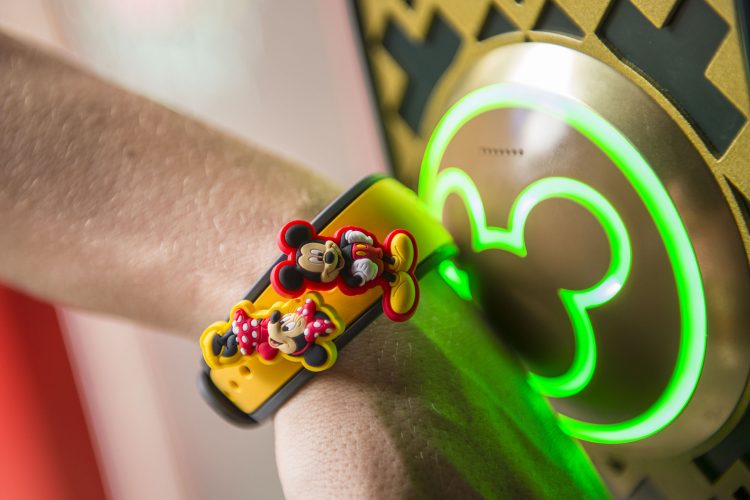
A little creepy? Maybe, but also very awesome in terms of offering personalized experiences that make each trip to Disney that much more magical.
For example, on this most recent trip, my husband and I checked into the park by tapping our MagicBands on the RFID reader at the gate and after our tickets had been accepted, the cast member manning the entrance looked up, smiled, and wished us both a happy anniversary. How did she know that? It’s a fact I provided to our hotel when we booked our reservation and they then linked to our MagicBands. Later that evening, during the Mickey’s Not-So-Scary Halloween Party, we stopped to get our pictures taken, and as the photographer was putting together our photos to link them to us, she asked which characters we were dressed up as – very casually – and from that point on, anytime a cast member saw me or my husband the radio frequency from our bands ID’d us as our respective characters and they responded to us as such, asking things like “slaying any dragons this evening?”. I think my husband maybe got a little TOO used to being called Sir and Prince during our candy pilgrimage that evening.
Fun Fact: Disney hands out over 250 TONS of candy during 32 Mickey’s Not So Scary Halloween Parties (and I think we had a combined 1 Ton ourselves).
Later that night, we took a ride on Buzz Lightyear’s Space Ranger Spin and our car stopped during the ride to let a handicapped passenger exit. This is a normal occurrence, but this time we stopped right in front of a “high value target” on the ride, allowing my husband to rack up, a normally unprecedented, ONE MILLION points on the ride.

This information was, of course, linked to our bands and we ended up with this rather hilarious picture where I’m still trying to get points and he’s just being annoying and steering the car away from the targets. Marriage.
Our trip went on like that for the weekend, every time we interacted with a cast member, be it at the front gate or as we were checking in to use a FastPass for the new Avatar ride, they used the information gathered on our MagicBands to add moments of unexpected magic to our journey.
This ability to create custom moments is incredible, especially when you consider that just one of Disney’s four parks has annual visitors in the range of 20 million people, that means they’re creating unique memories like this for around 55,000 people per day in just ONE PARK. That’s mind-blowing.
The “What Ifs” this kind of data brings are nearly endless:
- What if Disney could use your MagicBand for interactive displays in shops and other areas of the parks?
- What if they could ensure more accurate wait times by reading the movement information on MagicBands in line?
- What if they could then notify you when the wait time is at a certain range for your favorite rides?
- What if you could get a customized list of food/restaurant recommendations based on places you’ve already eaten in the park?
- What if photographers could take candid shots of you enjoying the parade or sharing a Mickey Ice Cream bar with your kids and link those to your account for you?
- What if Characters could greet you by name as well as Cast Members?
- What if Disney could optimize the design of pathways or increase cast member presence at specific locations based on the density of Magic Bands in the area?
But then… what if this kind of big data collection started spilling into the real world? How would the shopping experience be different if we let them know more about us as we walked into the store? What would the restaurant of the future look like if they were able to know our food preferences and visit habits as soon as we sat down? Can you imagine walking into a store and having a personal shopper who already knows your size and can see what your purchase and return history to help you find your next favorite outfit?
Some might see this level of big data as intimidating, but if the information is used to make our lives better and maintain some level of personal privacy – isn’t that what technology is all about?
After all, one could argue that the first automobile was greeted with the same level of trepidation, but I’d rather ride in a car than on a horse for my daily commute.
Photo Credit: Disney Press Kit
W and Element Hotel
Addiction Alliance of Georgia
The Green Room baked by Subway Pop-Up
The Time Shop by Chick-fil-A
This holiday season, Chick-fil-A dropped their aprons and took the streets of New York City to gift something other than its famous chicken recipe. Opening a limited-time pop-up space, the restaurant brand created a holiday experience located in the heart of the city’s SOHO neighborhood. Named The Time Shop, the pop-up invites visitors to “give the gift of time”, with the ultimate goal to “inspire and equip guests to gift quality time to their loved ones this year.”
As a Chick-fil-A fanatic, I had to see what The Time Shop was all about. Upon arrival, I was given an RFID bracelet that I scanned at the various photo-op stations around the space. This connected to my email address so that my selfies could be sent to me when I was done. Genius!
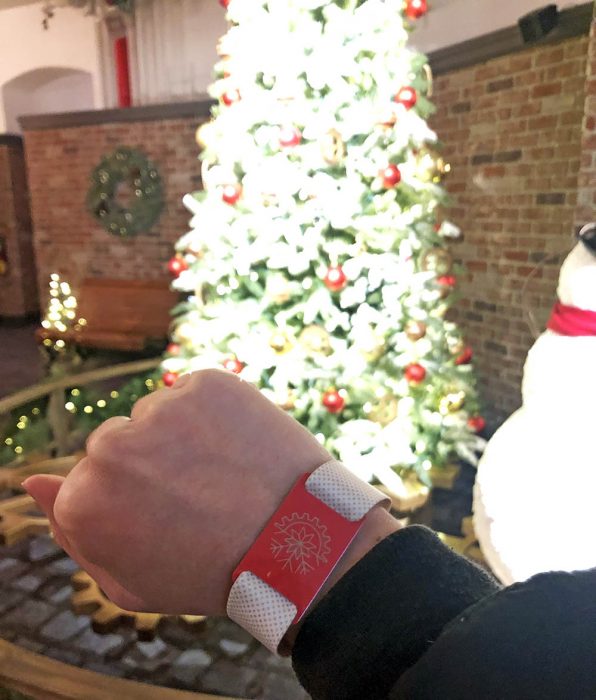
After check-in, I was free to explore. It only made sense that this Time themed space was covered with clocks of all shapes and sizes and that when I entered a smiling face would say “you’re right on time.” In addition to this, the halls and each room resembled the North Pole you see in movies—lots of Christmas trees, ribbons, bows, snowflakes, and garland.
Through out the experience, visitors can hop into four different photo stations, join storybook readings, decorate life-size felt snowmen, or grab a warm cookie/peppermint milkshake sample. As part of the spaces “giving the gift of time” philosophy, there are minimal digital touchpoints so that visitors spend time together rather than with screens. I’m so glad Chick-fil-a took this into consideration when designing the space. It perfectly aligns with the experience’s purpose and though people may not notice this while traveling through the space, it’s a conscious move on their part.
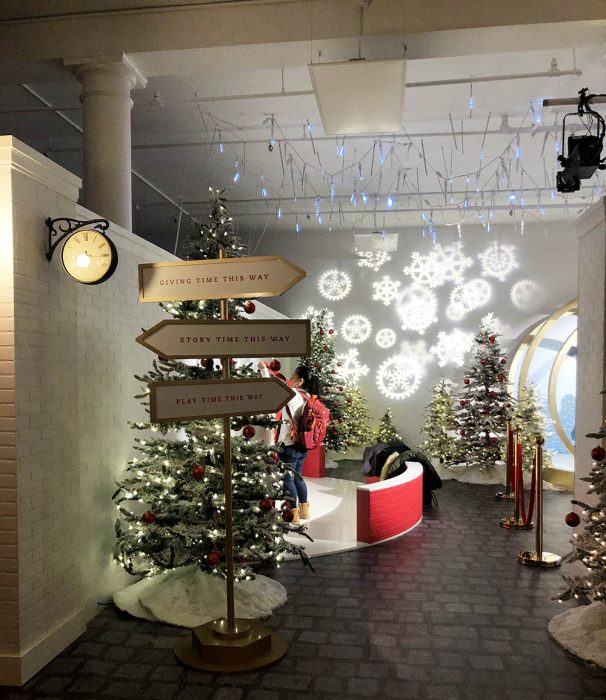
Wrapping up the experience, I took a seat in the Time Room to write a card to the person I would be gifting my time to. In this case, I gifted my mother “Four Hours Of Holiday Cookie Baking”. After this, I handed my card to a talented calligrapher that replicated my note on a festive red card that I was able to take home and will deliver to my mom in person.
My experience at the Time Shop was short and sweet, but I loved seeing a restaurant brand go beyond food to create a meaningful experience that brings people together. These days brands must go out of their way to provide an authentic and unique experience to the table. If you’re in New York City and looking for some holiday cheer, make a reservation at The Time Shop before it leaves!
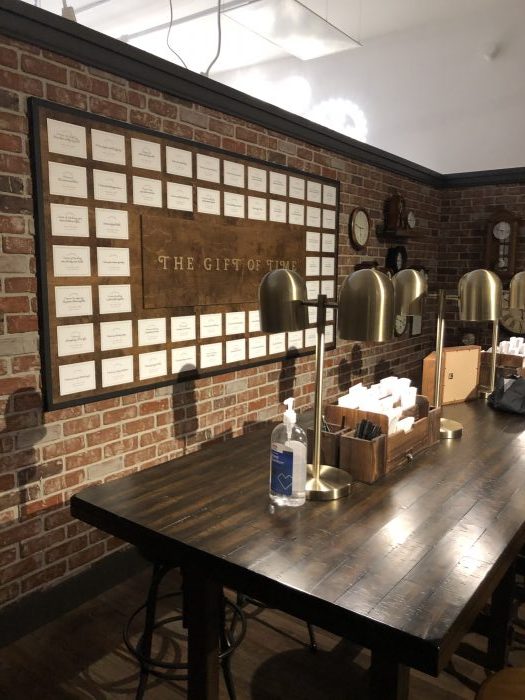
10 COVID-Safe Building Amenities
As COVID-19 changes everything around us, building amenities must change as well. The traditional definition of amenities will expand to support lifestyles and landlords will have to get creative when it comes to making sure their building and developments hold value for current and future tenants. Below we’ve highlight 10 building amenities that can be adapted to or adopted in the COVID world:
Rooftop Terrace / Outdoor Spaces
Efforts should be shifted to evolving and merging the physical confines of a structured building with the fresh openness of the outdoors. Whether it is re-imagining a building’s rooftop or adding an outdoor patio, allowing people the ability to go outside allows any space more flexibility and comfort during these times.
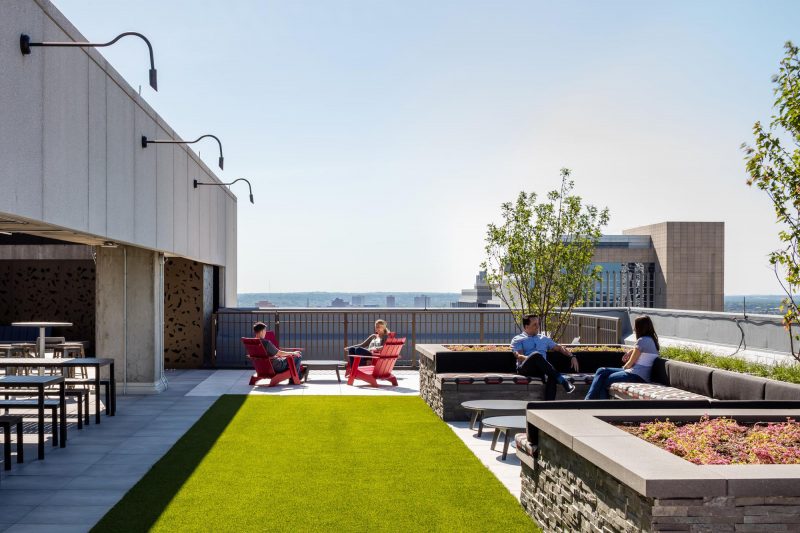
ECMC Group – Minneapolis, MN | NELSON Worldwide
Private Production and office suites
Providing access to private, carefully managed suites allows tenants access to the technology and privacy needed to work while offering extra an layer of safety through monitoring who and how the space is used.
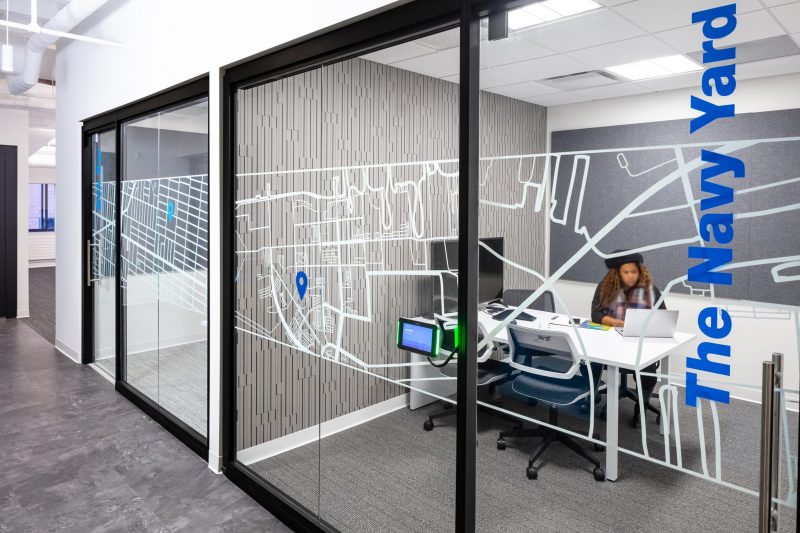
NELSON Offices – Philadelphia, PA | NELSON Worldwide
Bike/Scooter Storage Room
With public transit a concern, office buildings should consider adding perks like bike/electric scooter storage or rental center to accommodate alternative transportation options.
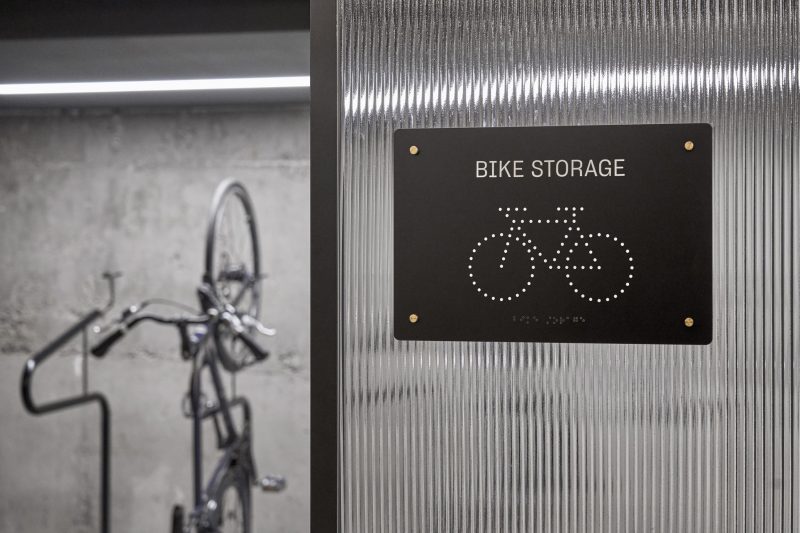
NOMAD Tower – New York, NY | NELSON Worldwide
Private green space / nature trails
Outdoor spaces will reign supreme in the coming years. Adding green spaces to properties allows users to move activities or fitness outdoors and limit time inside. In addition to this, outdoor spaces are better suited for the new sense work-life balance many have grown accustom to during COVID-19.
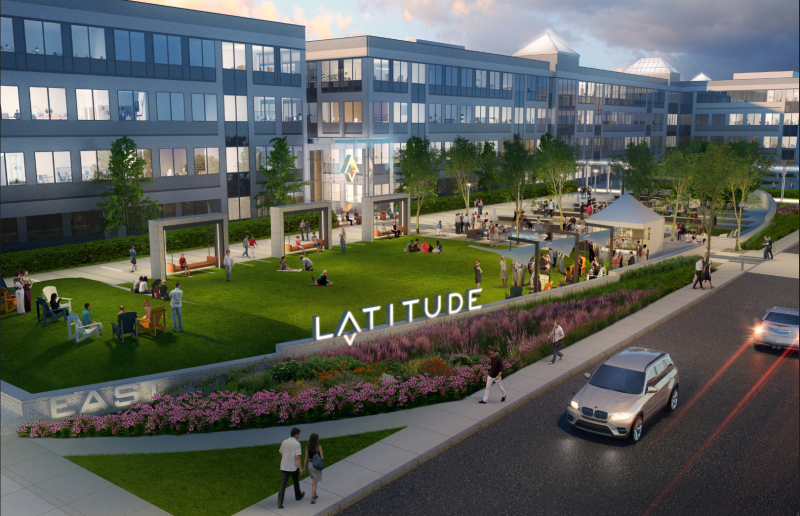
Latitude – Parsippany, NJ | NELSON Worldwide
Larger, Open co-working space
To further enforce physical distancing, providing large-open co-working spaces may allow tenants or employees to spread out. This can create more opportunities for safe collaboration, unified engagement, and increased productivity in the workplace.
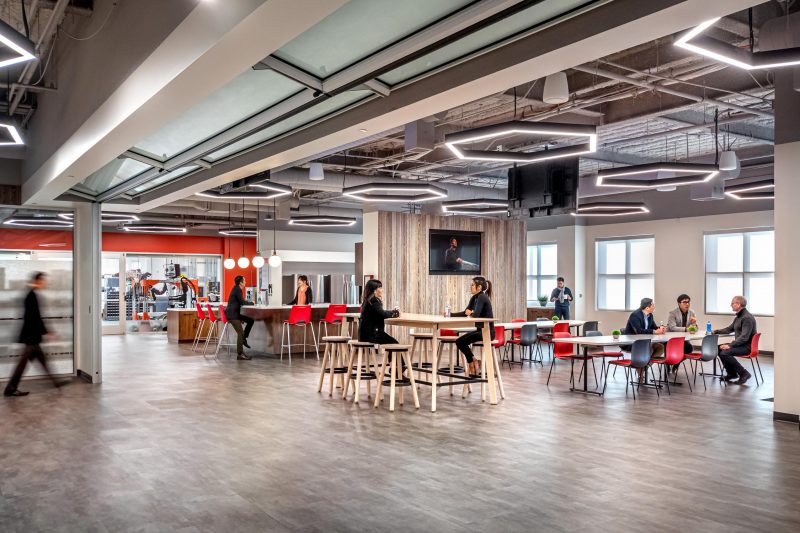
Toyota Research Institute – Los Altos, CA | NELSON Worldwide
Outdoor dining
To allow for more space and better air flow, moving cafeterias and kitchens outdoors will can create a safer food experience.. In addition to safety, these spaces offer tenants a more unique and vibrant experience to enjoy meals and breaks than before.
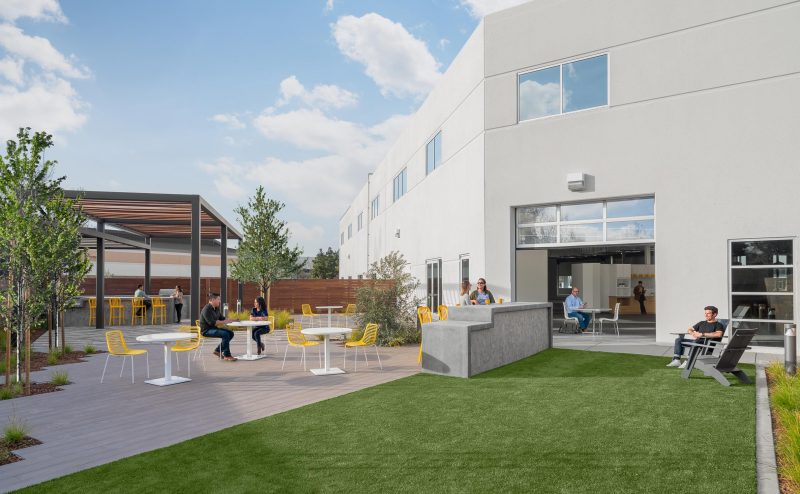
Rio Robles – San Jose, CA | NELSON Worldwide
Meditation Rooms / Technology-Free zones
With a renewed focus on holistic wellness, many tenants will search for dedicated space for users to unwind and recharge in a safe environment.
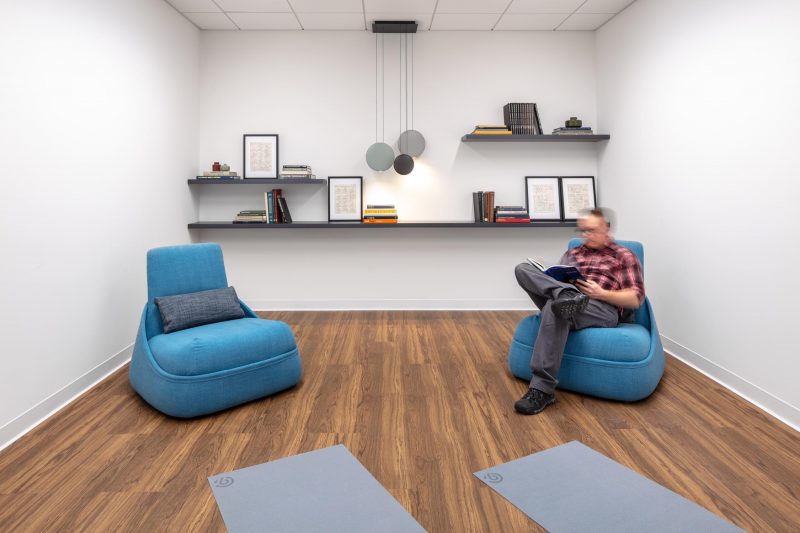
NELSON Offices – Philadelphia, PA | NELSON Worldwide
Fitness rooms with 24/7 cleaning services
While many gyms and fitness centers have hit pause during COVID-19, these spaces can still hold value in times when wellness is a top priority. For individual’s who still want to use these amenities, landlords must look into creating individual rooms and be able to provide an extensive cleaning service.
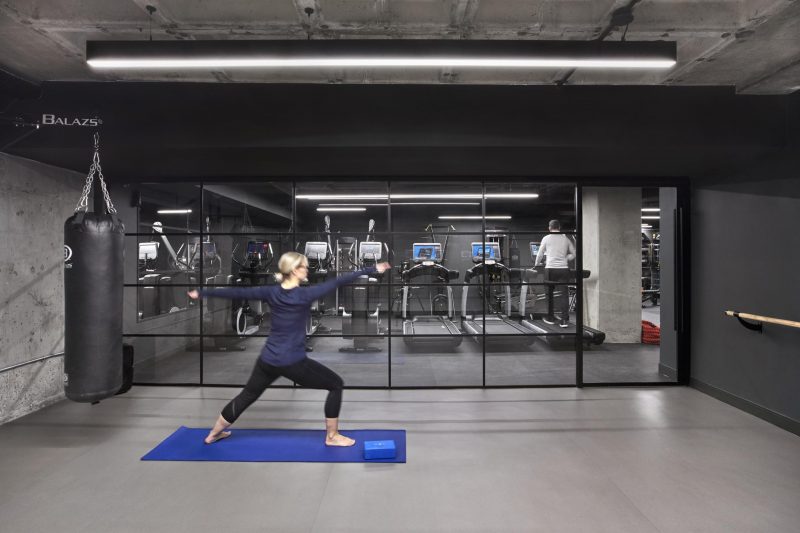
NOMAD Tower – New York, NY | NELSON Worldwide
Virtual programming
Creating omni-channel experiences will help property owners keep users engaged in times where access is limited. Apps that provide on-demand fitness classes or entertainment for families are great ways to keep providing experiences to tenants.
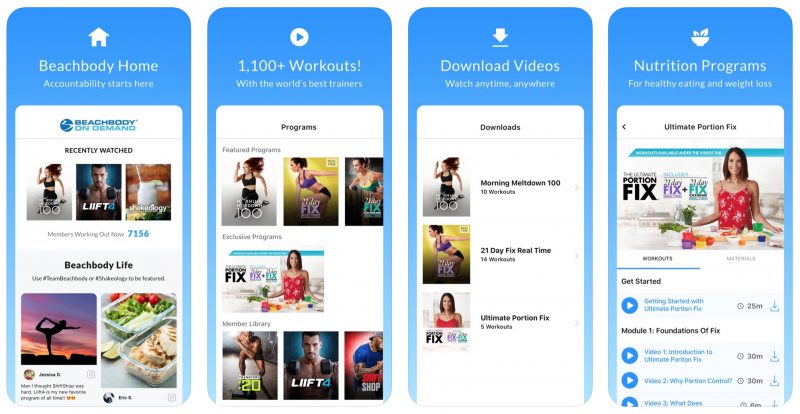
Grocery/Food Delivery Kiosk
To better manage who is going in and out of the building, building lobby and entrances spaces may consider adding a designated kiosk or delivery space for food and grocery delivery services.
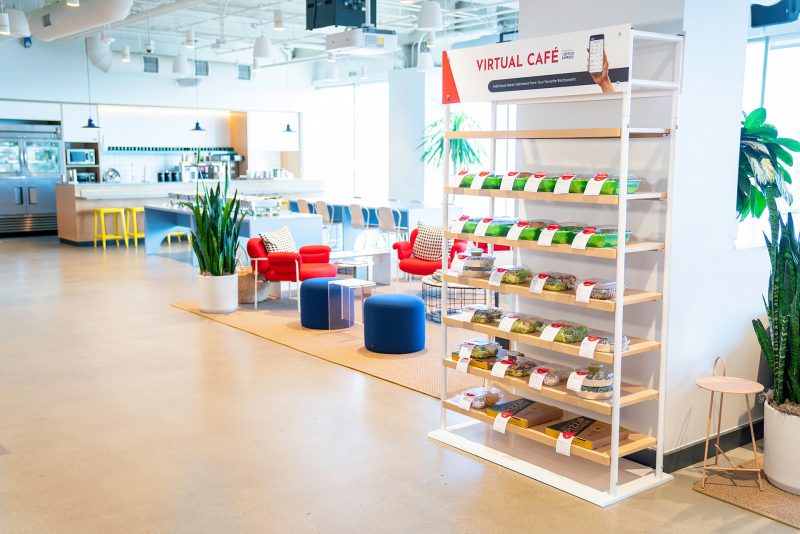
Foodja Virtual Cafe
For trends, insights, and resources on how to help you reenergize or reposition your real estate, visit our Asset AdvantEDGE newsletter.